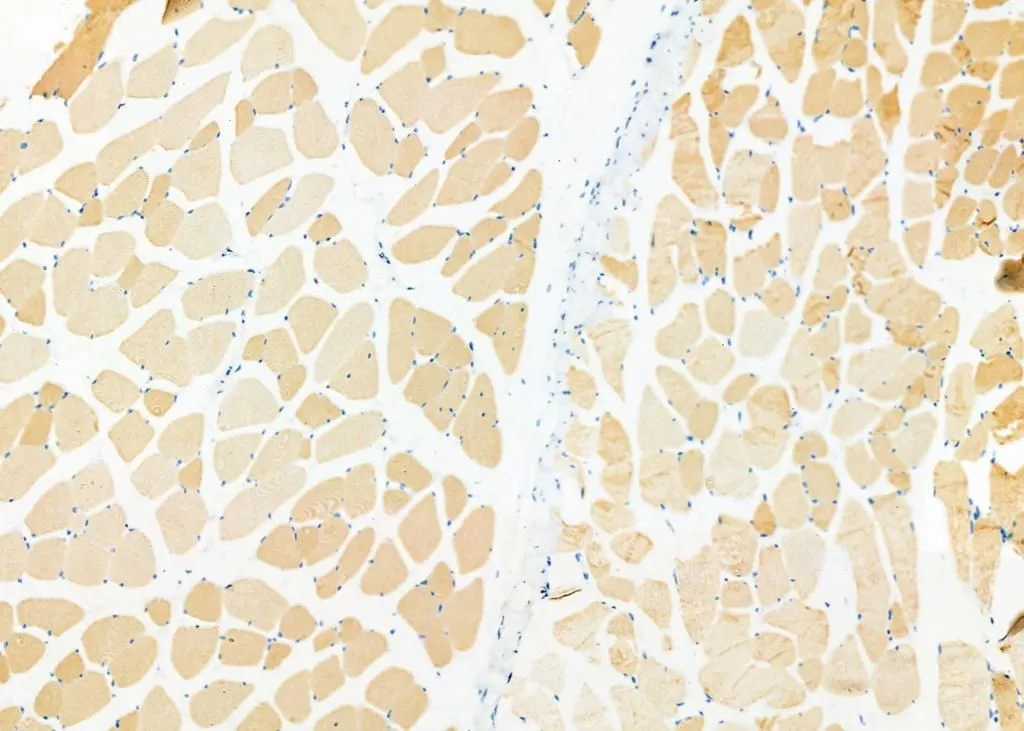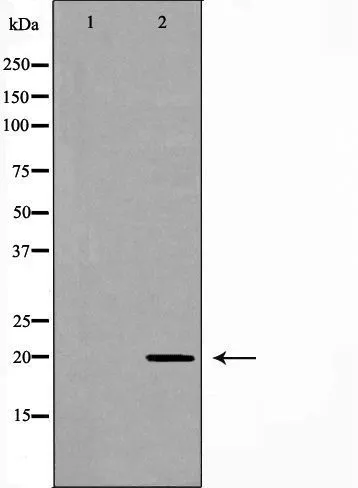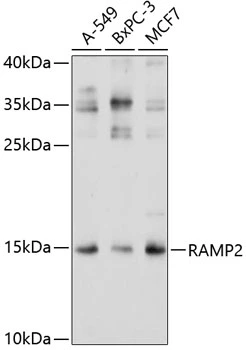
IHC-P analysis of mouse muscle tissue using GTX03586 RAMP2 antibody. Antigen retireval : Heat mediated antigen retrieval step in citrate buffer was performed. Dilution : 1:100
RAMP2 antibody
GTX03586
ApplicationsWestern Blot, ImmunoHistoChemistry, ImmunoHistoChemistry Paraffin
Product group Antibodies
ReactivityHuman, Mouse
TargetRAMP2
Overview
- SupplierGeneTex
- Product NameRAMP2 antibody
- Delivery Days Customer9
- Application Supplier NoteWB: 1:500-1:2000. IHC-P: 1:50-1:200. *Optimal dilutions/concentrations should be determined by the researcher.Not tested in other applications.
- ApplicationsWestern Blot, ImmunoHistoChemistry, ImmunoHistoChemistry Paraffin
- CertificationResearch Use Only
- ClonalityPolyclonal
- Concentration1 mg/ml
- ConjugateUnconjugated
- Gene ID10266
- Target nameRAMP2
- Target descriptionreceptor activity modifying protein 2
- Target synonymsreceptor activity-modifying protein 2, CRLR activity-modifying protein 2, calcitonin receptor-like receptor activity modifying protein 2, receptor (G protein-coupled) activity modifying protein 2, receptor (calcitonin) activity modifying protein 2
- HostRabbit
- IsotypeIgG
- Protein IDO60895
- Protein NameReceptor activity-modifying protein 2
- Scientific DescriptionThe protein encoded by this gene is a member of the RAMP family of single-transmembrane-domain proteins, called receptor (calcitonin) activity modifying proteins (RAMPs). RAMPs are type I transmembrane proteins with an extracellular N terminus and a cytoplasmic C terminus. RAMPs are required to transport calcitonin-receptor-like receptor (CRLR) to the plasma membrane. CRLR, a receptor with seven transmembrane domains, can function as either a calcitonin-gene-related peptide (CGRP) receptor or an adrenomedullin receptor, depending on which members of the RAMP family are expressed. In the presence of this (RAMP2) protein, CRLR functions as an adrenomedullin receptor. The RAMP2 protein is involved in core glycosylation and transportation of adrenomedullin receptor to the cell surface. [provided by RefSeq, Jul 2008]
- ReactivityHuman, Mouse
- Storage Instruction-20°C or -80°C,2°C to 8°C
- UNSPSC12352203






